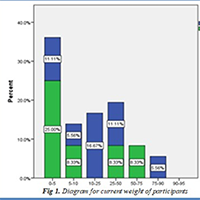Renal function in the third year among very low birth weight infants fed by supplemental proteins

HTML: 25
All claims expressed in this article are solely those of the authors and do not necessarily represent those of their affiliated organizations, or those of the publisher, the editors and the reviewers. Any product that may be evaluated in this article or claim that may be made by its manufacturer is not guaranteed or endorsed by the publisher.
Authors
Very Low Birth Weight (VLBW) infants have higher nutritional needs than term infants. Energy and protein are two important factors influencing their growth. Breastfeeding is not enough to meet VLBW infants’ needs, for this reason, complementary protein is required by them. Hence, the present study aimed at investigation of renal function among VLBW infants receiving complementary proteins. The study was conducted on two groups of intervention and control (n= 18 in each group) (Case study: VLBW infants born in Akbarabadi hospital of Tehran in 2014 2015). The intervention group includes 3-year-old children who weighting less than 1200 grams at birth and have received protein supplementation at the course of NICU hospitalization, protein was added to maternal milk when the amount of milk reaches to 100 cc/kg/day, at this time parenteral nutrition was discontinued and the volume of feeding was increased 20cc/kg/day until reached to 150-180cc/kg/day. We also added the fortifier to breast milk at this time. The fortification and the protein supplementation were stopped when the weight of the baby reached to 1500 grams. The control group was fed similar to the intervention group but had received no complementary protein . The renal function was evaluated by measuring such criteria as BUN, Cr, ALB and U/A. After data collection, a statistical analysis was performed using SPSS software Ver. 22. Following to BUN evaluation, a significant correlation was seen between BUN and received protein (p-value=0.010). However, there was no significant correlation between Cr and received protein as well as mean values of the two groups (p-value=0.0766). Similarly, an insignificant correlation was found between the two groups following to investigation of ALB (p-value=0/257), while the mean values of the two groups were similar. The both groups were also equal in U/A. The complementary protein increased the BUN with no effect on Cr, ALB and U/A, providing no impact on renal function. Therefore, complementary protein intake made no conflict in renal function.
How to Cite
PAGEPress has chosen to apply the Creative Commons Attribution NonCommercial 4.0 International License (CC BY-NC 4.0) to all manuscripts to be published.

 https://doi.org/10.4081/ejtm.2020.8720
https://doi.org/10.4081/ejtm.2020.8720



